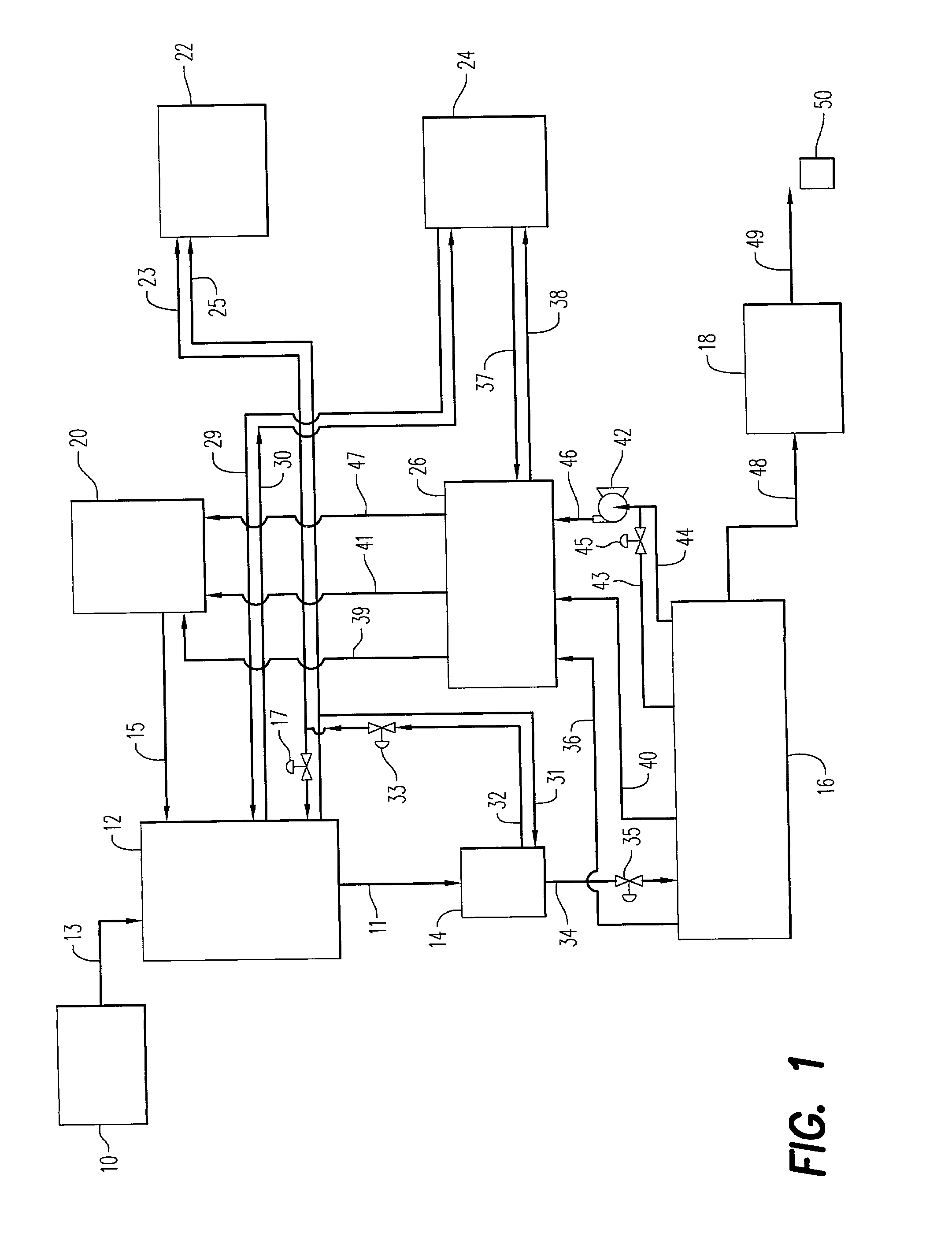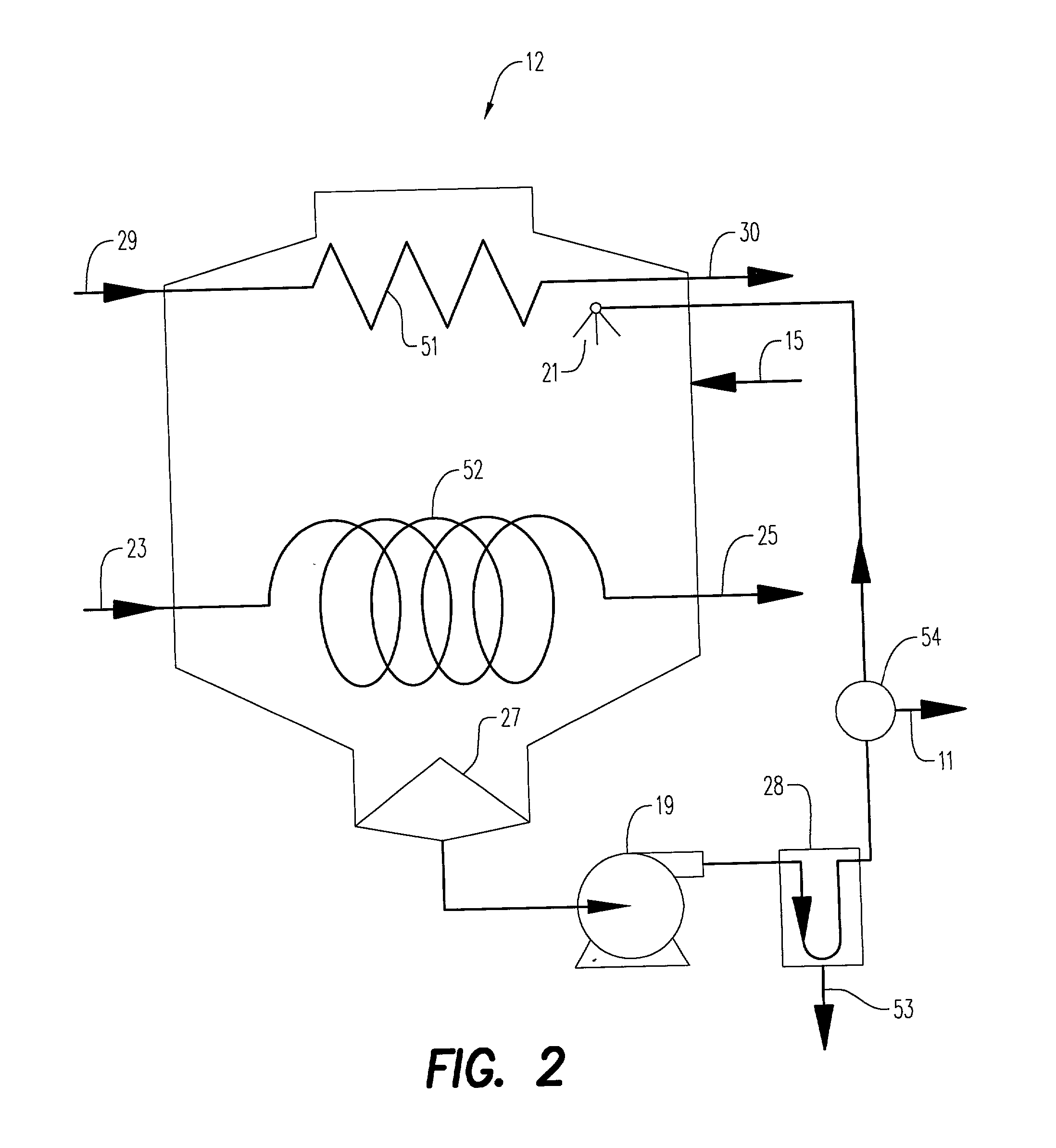Polystyrene reclamation process
a polystyrene and reclamation technology, applied in the field of polystyrene reclamation process, can solve the problems of unresolved environmental problems, inability to achieve the same technical or economic success in the recycling of polystyrene-type resins, and inability to achieve simple recovery methods of polystyrene-type materials, etc., to achieve the effect of preventing solvent loss, facilitating solvent reuse, and high vaporization ra
- Summary
- Abstract
- Description
- Claims
- Application Information
AI Technical Summary
Benefits of technology
Problems solved by technology
Method used
Image
Examples
example 1
[0055] Example 1
[0056] In this example 21.25 lbs of waste polystyrene foam were reclaimed. The system was cleaned prior to the run. The polystyrene was dissolved in the Ensolv.RTM. n-propyl bromide solvent to provide a 33+% solution on a weight basis.
[0057] The following conditions applied to the run
1 Temperatures Setting Measured (Internal) Zone 1 350.degree. F. (177.degree. C.) Zone 2 325.degree. F. (163.degree. C.) Zone 3 275.degree. F. (135.degree. C.) 250-275.degree. F. (121-135.degree. C.) Zone 4 275.degree. F. (135.degree. C.) 300.degree. F. (149.degree. C.) Zone 5 285.degree. F. (141.degree. C.) Zone 6 300.degree. F. (149.degree. C.) 300.degree. F. (149.degree. C.)
[0058] Pressure gauge (Zone 2, above the feed valve) - 30 psi
[0059] Air Pressure to pump (pumping solution into and through preheater) - 90 psi
[0060] By-Pass valve (preheater to dissolve unit)- slightly open
[0061] Feed valve (i.e. expansion valve 35) - full open
[0062] Extruder RPM - 250
[0063] Amps (screw motor, dua...
example 2
[0075] Example 2
[0076] In this example, 4 lbs. of a used toner (approx. 25% by weight polystyrene) and 11 lbs. of polystyrene foam are reclaimed. The reclaimed polystyrene is black due to the carbon black of the toner. The run was started by dissolving the 11 lbs. of foam in 25 lbs. of Ensolv.RTM. solvent. After transfer of this solution to the process tank, the 4 lbs. of toner, dissolved in 5 lbs of solvent, were added to the polystyrene foam solution. The resulting solution was circulated through the Kenix.TM. mixer for 30 minutes.
[0077] The following conditions applied to the run
3 Temperatures Setting Measured (Internal) Zone 1 350.degree. F. (177.degree. C.) Zone 2 325.degree. F. (163.degree. C.) Zone 3 310.degree. F. (154.degree. C.) 285.degree. F. (141.degree. C.) Zone 4 280.degree. F. (138.degree. C.) 300.degree. F. (149.degree. C.) Zone 5 300.degree. F. (149.degree. C.) Zone 6 300.degree. F. (149.degree. C.) 300.degree. F. (149.degree. C.) Pressure gauge (Zone 2)-30 psi Air ...
PUM
| Property | Measurement | Unit |
|---|---|---|
| temperature | aaaaa | aaaaa |
| boiling point | aaaaa | aaaaa |
| process time | aaaaa | aaaaa |
Abstract
Description
Claims
Application Information
 Login to View More
Login to View More - R&D
- Intellectual Property
- Life Sciences
- Materials
- Tech Scout
- Unparalleled Data Quality
- Higher Quality Content
- 60% Fewer Hallucinations
Browse by: Latest US Patents, China's latest patents, Technical Efficacy Thesaurus, Application Domain, Technology Topic, Popular Technical Reports.
© 2025 PatSnap. All rights reserved.Legal|Privacy policy|Modern Slavery Act Transparency Statement|Sitemap|About US| Contact US: help@patsnap.com


